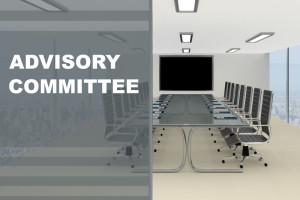A year ago, I was asked by a University CIO to participate in an External Advisory Committee on Information Technology. At that point, I was just finishing up the interim CIO engagement at University  Hospitals and launching a new HIT advisory firm, StarBridge Advisors. I asked the CIO “why me” and considered the time commitment. I said yes.
Hospitals and launching a new HIT advisory firm, StarBridge Advisors. I asked the CIO “why me” and considered the time commitment. I said yes.
This week I attended the second half day in-person meeting of the committee. The first was a few days before I started the interim CIO engagement at Stony Brook Medicine in March.
These commitments to other organizations take time: time to review extensive materials in advance, travel and connecting flights, and in-person meetings.
But they are a win-win.
I learn and they learn. I am impressed with this CIO and his IT leadership team as I have gotten to know them. I am impressed with the support and engagement they have been able to garner from the Chancellor and Provost. I am impressed with my colleagues on the committee – a mix of university CIOs and IT business leaders. And I’m impressed with the ambitious, multi-year roadmap to replace their financial, HR and student administration systems with a new, integrated solution.
While my IT experience is in healthcare, I have worked in academic medical centers and collaborated with university IT teams. Financial and HR systems are universal across industries. But I have not gone this deep, before, into the unique systems of the higher education sector. I’m learning that student administration systems have some of the same complexities and challenges that electronic health records have in my world.
Of course, IT implementations regardless of industry and domain have many common components. Addressing a current state that is fragmented, self-developed, and highly customized with proven, integrated vendor solutions is not new to me. The many decisions involved in data conversions and archive strategies, the establishment of robust data governance, the inclusion of change management throughout the project – these are all components that we in IT know are fundamental to success.This IT leadership team has a solid plan that we have reviewed. We have provided advice and guidance from our experience in other organizations. They framed excellent discussion questions for us to go deep on as a group. We validated that they are on the right track and they took the committee’s input as minor course corrections.
The overall intent of the committee is to provide advice and serve as a sounding board for information and information technology strategy, planning and major investment proposals. The committee supplements and complements the internal information technology governance, strategy and planning processes.
I have a 3-year term on the committee so will see their progress and the challenges they will face in the coming years as they move forward with their plan. Kudos to the CIO and university leadership for having the foresight and openness to create this external advisory committee. I’m honored to be part of it.
Many healthcare provider organizations have an IT committee of the board. While it may focus more on governance and oversight, the makeup of such a committee serves to provide an external view for the CIO. If you are a CIO and don’t have such a committee, I encourage you to consider an external advisory committee especially if you are embarking on a major system change initiative. There is great value in getting insight from others inside and outside the industry to ensure success.
